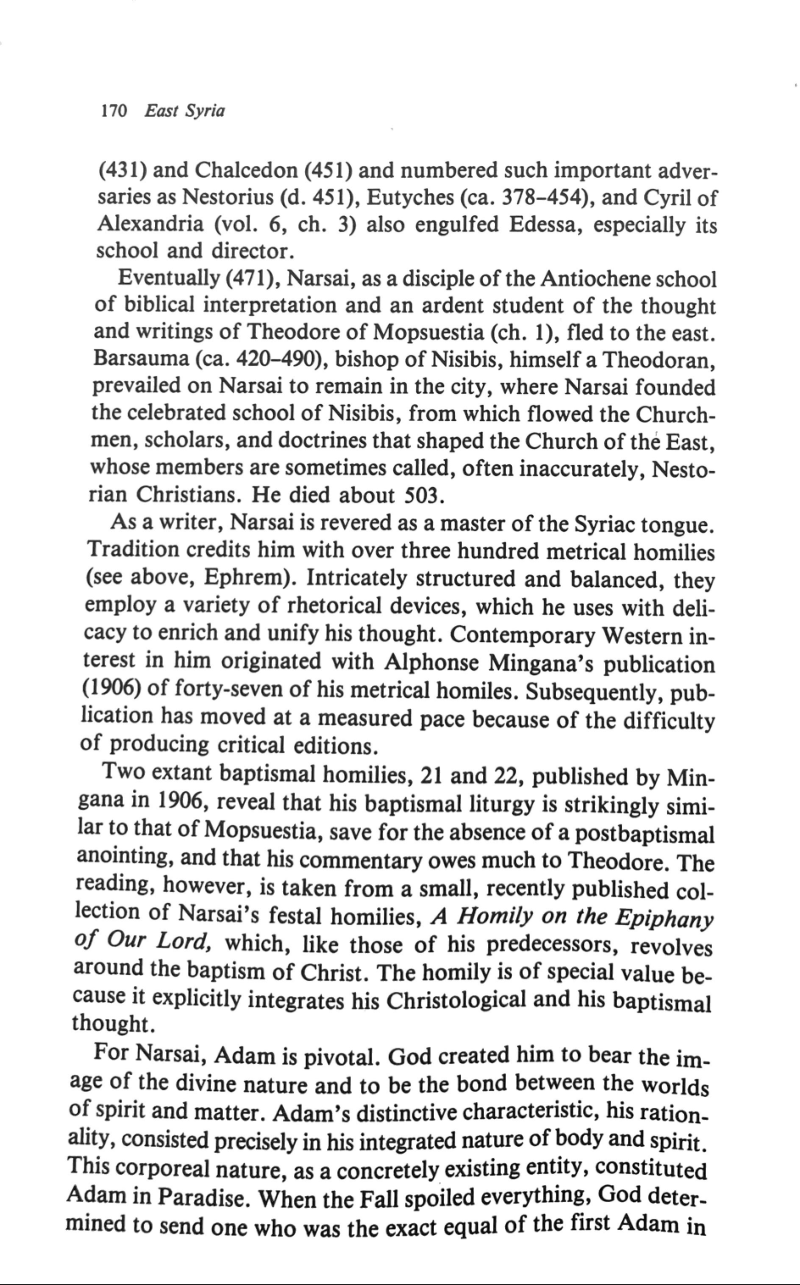Thomas W. Finn discusses Narsai's theology of Adam and Jesus being the "Second Adam."
- Type
- Book
- Source
- Thomas M. Finn Non-LDS
- Hearsay
- DirectSecondary
- Reference
Thomas M. Finn, Early Christian Baptism and the Catechumenate: West and East Syria (Message of the Fathers of the Church 5; Collegeville, Minnesota: The Liturgical Press, 1992), 170-71
- Scribe/Publisher
- Liturgical Press
- People
- Thomas M. Finn, Narsai
- Audience
- Reading Public
- Transcription
For Narsai, Adam is pivotal. God created him to bear the image of the divine nature and to be the bond between the worlds of spirit and matter. Adam’s distinctive characteristic, his rationality, consisted precisely in his integrated nature of body and spirit. This corporeal nature, as a concretely existing entity, constituted Adam in Paradise. When the Fall spoiled everything, God determined to send one who was the exact equal of the first Adam in nature, exceeding him only in honor and accomplishment. Such is the Second Adam, in whom dwells the Word of God. As Second Adam, he is constituted of two integral, concretely existing entities, or natures: One is ”Adamite,” namely, Jesus, the son of Mary; the other, divine, namely, the Word, the Son of God. Both entities, or natures, are the source of personal acts, but neither is the source of the personal acts of the other. Thus, the Word cannot suffer and die, nor can Jesus crated, nor, more important, re-create.
- Citations in Mormonr Qnas
The B. H. Roberts Foundation is not owned by, operated by, or affiliated with the Church of Jesus Christ of Latter-day Saints.

